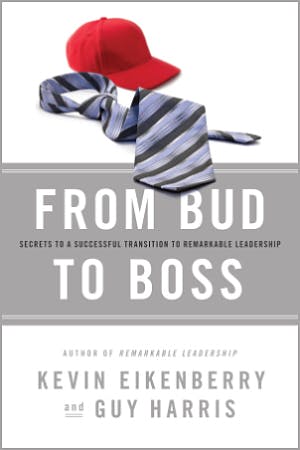By Kevin Eikenberry and Guy Harris
By this point in the book, you probably realize that our focus is on giving you practical insights and observations rather than long, drawn-out theoretical discussions.
There are entire books written on this one topic. So, as is the case in other parts of the book, we are giving you, from our perspective, the six most important things to consider as you plan for and deliver performance reviews.
1. Make it ongoing
The single biggest problem with the annual performance review is with the annual part. How can anyone improve or adjust his course successfully if he only receives feedback once per year?
If your kids only got feedback on their writing skills once per year, you’d be picketing the school. If the coach only gave the basketball players feedback on last year’s performance at the start of the new season, they’d be mocked on talk radio and fired. Is once a year really often enough to give people feedback on their work performance?
Yes, you have to fill out the form at the end of the year, and you can also have ongoing conversation about people’s success and challenges all year long. Whether formal or informal (and a good rule of thumb is that there should be some of each), you should think about your feedback and coaching as a process and not as an event.
2. Avoid surprises
If you are doing the ongoing-process suggestion correctly, there is nothing that shows up on the ‘‘final’’ performance evaluation that should surprise the receiver. If you are having ongoing conversations, why would there be?
The only possibility would be if something new happened with someone’s performance on a project or with a customer in the short time since the most recent conversation. Make it your goal that there are no surprises.
3. Make it a conversation
Most performance reviews end up being the leader sharing a bunch of feedback and the employee making a few comments at the end. While we have never seen a process designed with this as the intention, it typically ends up this way.
We’ll share much more about this in Chapter 31 (‘‘A Practical Coaching Model . . . ’’), but in short, good performance evaluations are a conversation. If it is all about the other person’s performance, why wouldn’t that person be doing at least half of the talking?
4. Create ownership
In the end, don’t you want employees to own their behavior, their results, and their plan for improvement?
The best way to set the table for this is to make your feedback and coaching sessions a conversation. When people are sharing their ideas and are involved in a conversation about their performance, they can’t help but own the outcome.
5. Reduce fear and anxiety
Another one of the biggest problems with most performance evaluation processes is that ‘‘the meeting’’ is filled with anxiety. I
f you had a meeting once a year, knew that you may get some surprises about your performance, and expected to get lectured to by your boss (from a position of power) as she walks through comments on a daunting form — wouldn’t you be a little stressed? Or put another way, have you ever been stressed about a performance evaluation in the past?
If you do the other suggestions in this chapter you will reduce this anxiety significantly. But recognize it won’t go away immediately. Acknowledge how people are feeling before and during the meeting. Do everything you can to make them feel more comfortable and more engaged in the process. When you do that, everyone wins.
6. See the form as an outcome, not the purpose
Repeat after us. ‘‘It isn’t about the form.’’
Your form may be either unwieldy or elegant. And it doesn’t matter. It isn’t about the form.
Yes, the form must be filled out. As you are doing the other things in this chapter, the form will be filled out.
More important, what is on the form will be more meaningful and will have greater positive impact on people’s future performance — which is why we do it anyway.
Excerpted from, “From Bud to Boss: Secrets to a Successful Transition to Remarkable Leadership” by Kevin Eikenberry and Guy Harris. Copyright 2011 by Kevin Eikenberry and Guy Harris. All rights reserved. Published by Jossey-Bass. A Wiley Imprint. 989 Market Street, San Francisco, CA. 94103.
